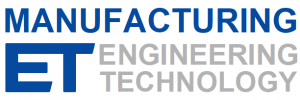Patent project is due at final exam period
First: Find out what Ernest Hemingway said about the first draft of anything. It applies to engineering design as well as to writing.
- Problem Definition, Scope
- COVER YOUR BUTT
- DON’T GUESS — KNOW.
- Be able to defend any decision you make
- Make decision based on the best information
- If you don’t KNOW. Tell/ask someone who should.
- Get input
- First of all, know your job.
- learn something about how to do your job better every day
- Also, know your industry & company
- Marketing
- End user
- Manufacturing
- First of all, know your job.
- Constraints (See: apple card)
- Cost – will always be a factor
- Materials
- Know what you can actually BUY.
- Shop first, then specify instead of the other way around
- Look at catalogs and know what types of things are available
- Hardware stores are NOT a good source in general
- Know what you can actually BUY.
- Processes
- Draft angles
- Shrinkage
- Wall thicknesses
- Minimum bend radii
- Tolerance ranges
- Environment
- Salt spray
- Heat and humidity
- Ice
- Petroleum-based chemicals
- Sunlight
- etc
- Standards/Regulatory
- Performance characteristics
- Use the tools
- Use analytical methods
- Understand the limitations of your tool
- temper with real-world understanding
- e.g., truss analysis is usually 2D
- Test your assumptions
- CAD
- Mock-up
- Prototype
- Use analytical methods
- Right sized features
- Understand tolerance, clearance, allowance, interference
- clearance for operation
- clearance for access, disassembly, replacement
- clearance for tools & tooling
- Press-fitting – not always appropriate
- Hole Locations
- for strength
- for access
- Understand tolerance, clearance, allowance, interference
- Rigidity & Robustness by design
- DON’T RELY ON WISHFUL THINKING
- Properly using friction
- Know about 4 Bar linkages
- Design joints for the joining method
- e.g., don’t glue a butt joint
- Fixing on axis
- Keys
- Splines
- Setscrews
- Lock collars
- Retaining rings
- Know your statics
- Factors of safety
- Balance competing design elements for performance
- Know your dynamics
- Be careful of binding
- Remember efficiencies
- Oversize motors
- Oversize power transmission elements
- Stress risers
- Sharp corners
- Holes close together
- Abrupt changes in cross section
- Symmetry
- Use symmetry unless there is a good reason not to.
- Don’t redesign the wheel – know what you can buy
- Know about nominal sizes
- Look at catalogs, websites
- Don’t assume something is easy to get
- Use design guides
- Simplify
- Standardize, limit types of fasteners, etc.
- Proper safety factors
- Design for…X
- Manufacturing
- Assembly
- Maintenance
- Always consider disassembly!
- Robust Design (Taguchi)
- De-sensitize to variation
- Identify what characteristic are critical to quality (CTQ)
- Parallel vs. serial, reliability
- Evaluate your own designs, be critical and objective. What could have you improved on?
